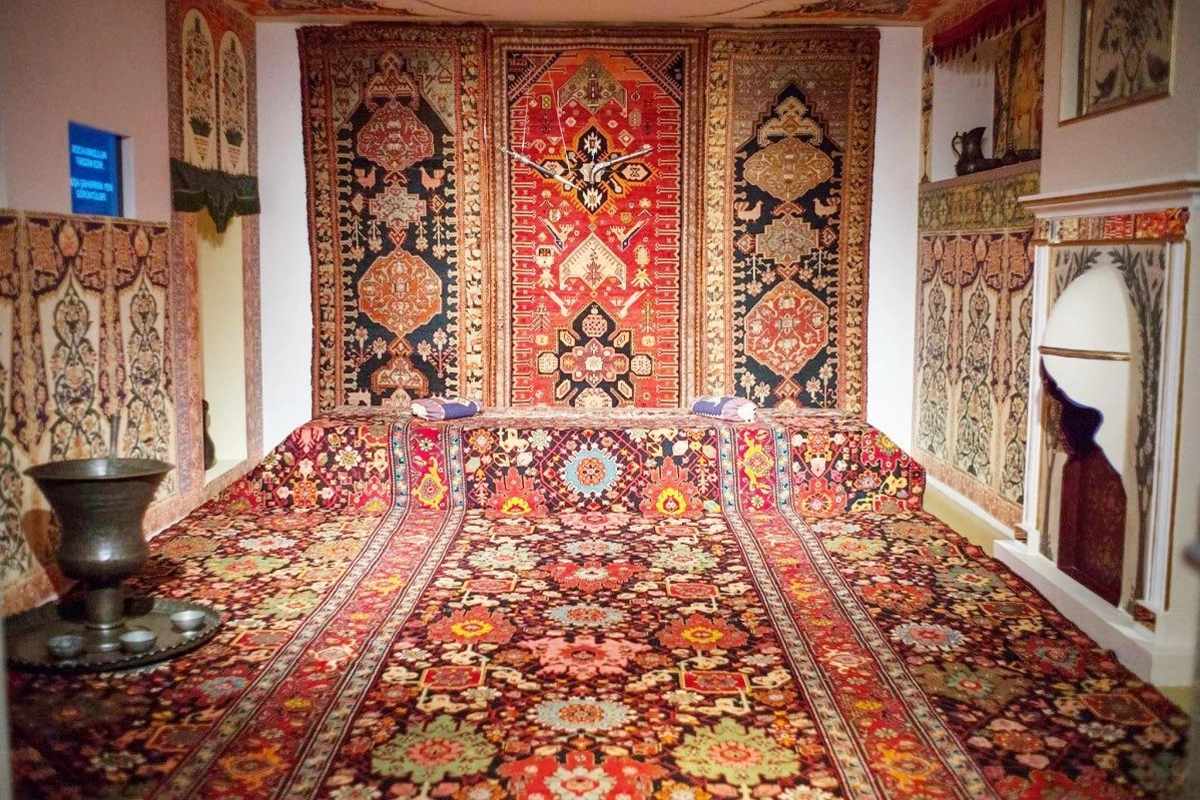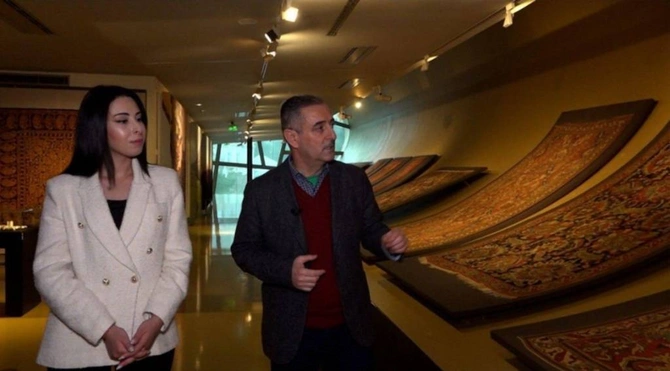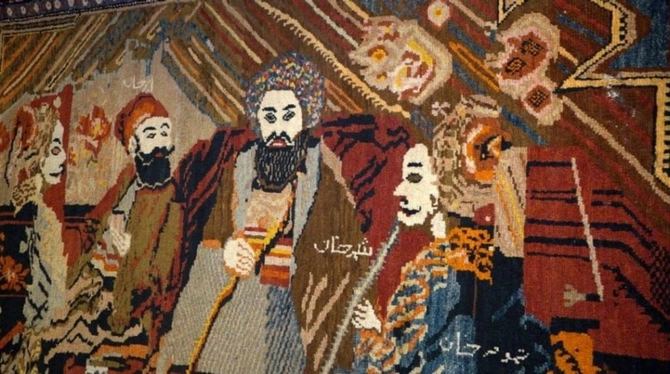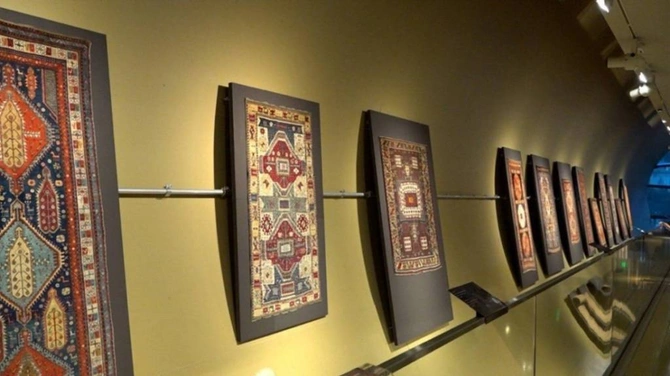
Inside the Azerbaijan National Carpet Museum, a captivating world of intricate patterns and vibrant colors comes to life. The threads woven into these carpets carry the echoes of history, enduring as a testament to the passage of time.
The unique beauty of Karabakh carpets creates a special atmosphere, and the museum’s exhibition allows visitors to immerse themselves in the mysterious world of carpet weaving. The richness and depth of Azerbaijani carpet patterns are mesmerizing at first glance - each loop and each motif is imbued with profound meaning, The Caspian Post reports citing UzA.

It is as if Azerbaijani epics and tales come to life here - heroes of the legendary dastan “Rustam and Zohrab” and the wise Molla Nasreddin gaze at us from the walls. The finesse, elegance, color harmony, grand dimensions, and intricate narrative compositions of Karabakh carpets distinguish them from all others.

Honored artist and professor Memmedhuseyn Huseynov spoke about the vibrant and unique nature of Azerbaijani carpets: “Azerbaijani carpet weaving is incredibly diverse. It can be stated with certainty that the regions where the most ancient carpet samples and weaving tools have been discovered align with our geography, and scholars worldwide confirm this. The Karabakh school is one of the four main schools of our carpet weaving tradition. Within it are three primary groups: the Shusha, Jabrayil, and Karabakh styles. Karabakh carpets are not only artistically expressive but also serve as carriers of our history, cultural identity, and national memory”.
The defining feature of the Karabakh carpet-weaving school is the use of large knotting. The creation of complete carpet sets, a technique of dense weaving, and a unique sense of color harmony also distinguish it.

Memmedhuseyn Huseynov also highlighted the artistic and technical features of Karabakh carpets, emphasizing the uniqueness of their color compositions, which predominantly feature red, blue, green, and yellow shades. The themes of Karabakh carpets are highly diverse, often depicting motifs from fairy tales and dastans. “Karabakh carpets are housed in many museums worldwide, with the most extensive collection at the Azerbaijan National Carpet Museum. Foreign tourists and local art enthusiasts visit the museum to admire Karabakh carpets and learn more about them”, he noted.
Azerbaijan’s carpet weaving art receives special attention and support from the state. In 2010, thanks to the efforts of the First Vice President of Azerbaijan and President of the Heydar Aliyev Foundation, Mehriban Aliyeva, Azerbaijani carpet weaving was inscribed on UNESCO’s Representative List of Intangible Cultural Heritage. This significantly contributed to the international recognition and preservation of Azerbaijan’s carpet art.

The Azerbaijan National Carpet Museum plays a crucial role in preserving and studying the art of carpet weaving. It houses and exhibits rare carpet samples from various regions of Azerbaijan.
Thanks to ongoing initiatives, Karabakh carpets are recognized worldwide, ancient traditions are passed down to future generations, and carpet weaving is preserved as an integral part of Azerbaijan’s cultural identity. Significant efforts are being made in Karabakh to revive carpet weaving traditions. Artisans, maintaining ancient techniques in the liberated territories, are creating new designs while preserving the unique patterns of Karabakh carpets.
Each Karabakh carpet is a valuable heritage left for future generations, embodying Azerbaijan’s culture and national identity.
Share on social media
